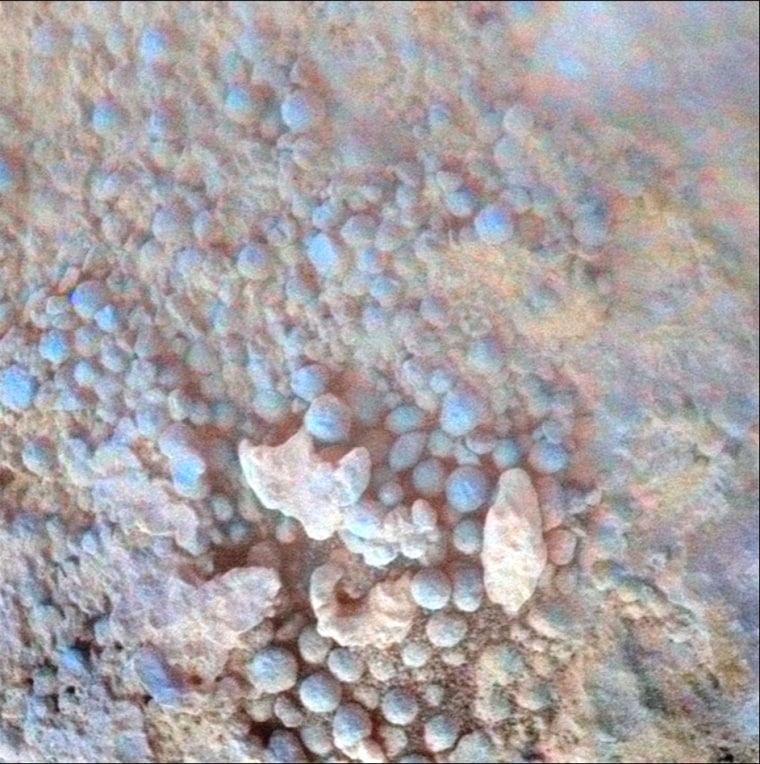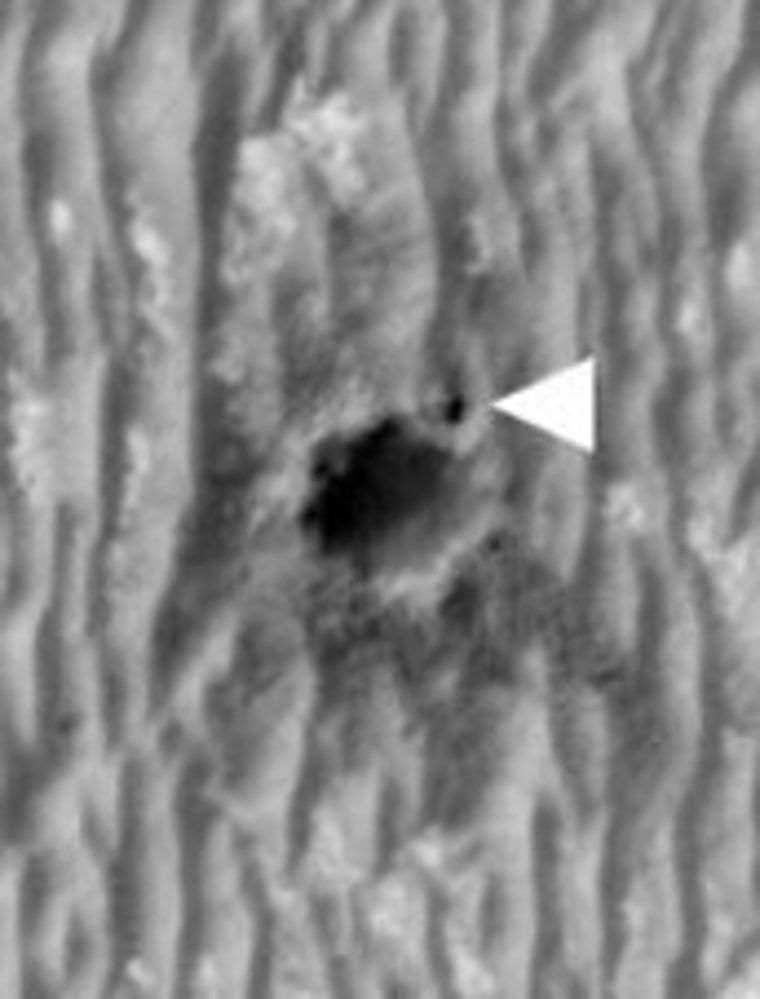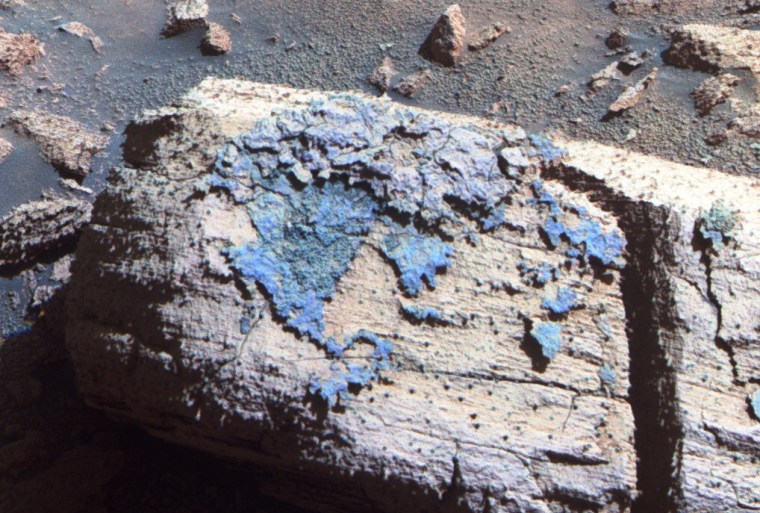NASA's Mars rover Opportunity has found a Martian rock covered in weird material as its odometer hit a major milestone this week, with the long-lived robot completing equivalent to a half–marathon on the Red Planet.
Opportunity, now in its seventh year on Mars, found the odd Mars rock during the past six weeks studying investigating a crater called "Concepción."
The crater is about 33 feet (10 meters) in diameter, with dark rays extending from it, as seen from orbit, which made it a target of interest for rover inspection because they suggest the crater is young.
The rover made the pit stop to investigate the crater on its long journey to the large crater Endeavour, which is still about 7 miles (12 kilometers) away. It was while Opportunity was at Concepción that the rover surpassed 12.43 miles (20 kilometers) of total driving, about the length of a half-marathon.
Opportunity has driven farther than any other wheeled robot to land on Mars. Its robotic twin Spirit, which landed in January 2004 just weeks ahead of Opportunity, has driven about 4.8 miles (7.7 kilometers), while NASA's Sojourner rover, a small robot that landed in 1997, could drive only about a third of a mile (about half a kilometer) from the Pathfinder base it landed with.
Mars rock oddity
With new software that allows Opportunity to photograph rocks and other aspects of the Martian terrain and decide for itself what is worth closer inspection, the rover took an up-close look at a few rocks ejected by the impact that created Concepción.
What Opportunity has seen are chunks of the same type of bedrock it has seen at hundreds of locations since landing in January 2004: soft, sulfate-rich sandstone holding harder peppercorn-size dark spheres like berries in a muffin. The little spheres, rich in iron, gained the nickname "blueberries." But these rocks have some unusual twists as well.

"It was clear from the images that Opportunity took on the approach to Concepción that there was strange stuff on lots of the rocks near the crater," said Steve Squyres of Cornell University, principal investigator for Opportunity and Spirit. "There's dark, grayish material coating faces of the rocks and filling fractures in them. At least part of it is composed of blueberries jammed together as close as you could pack them. We've never seen anything like this before."
Opportunity used tools on its robotic arm to examine this unusual material on a rock called "Chocolate Hills." In some places, the layer of closely packed spheres lies between thinner, smoother layers.
"It looks like a blueberry sandwich," said Matt Golombek, a rover science-team member at NASA's Jet Propulsion Laboratory in Pasadena, Calif.
Melted Mars rocks
Initial analysis of the coating's composition does not show any obvious component from whatever space rock hit Mars to dig the crater, but that is not a surprise, Golombek said. "The impact is so fast, most of the impactor vaporizes," he said. "Thin films of melt get thrown out, but typically the composition of the melt is the stuff that the impactor hit, rather than the impactor material."

The composition Opportunity found for the dark coating material fits at least two hypotheses being evaluated, and possibly others. One is that the material resulted from partial melting of blueberry-containing sandstone due to the energy of the impact. Another is that it formed from the filling of fractures in this type of rock before the impact occurred.
"It's possible that when you melt this rock, the sandstone melts before the blueberries do, leaving intact blueberries as part of a melt layer," Squyres said.
"As an alternative, we know that this type of rock has fractures and that the sandstone can dissolve," he said. "Long ago, water flowing through fractures could have dissolved the sandstone and liberated blueberries that fell down into the fracture and packed together. In this hypothesis, the impact that excavated the crater did not play a role in forming this material, but split rocks along fractures so the material is exposed on the exterior like a coating."
Golombek said, "One consideration that jumps out is that we've been driving around this part of Mars for six years and never seen this stuff before, then we get to this young crater and it's coating rocks all around the crater. Sure looks like there's a connection, but it could just be a coincidence."
The observation that the rocks thrown from the crater have not yet eroded away much is evidence that the crater is young, confirming the suggestion from the dark rays.
"We're not ready to attach a number to it, but this is really young. It is the youngest crater we've ever seen with Opportunity and probably the youngest either rover has seen," Squyres said.
